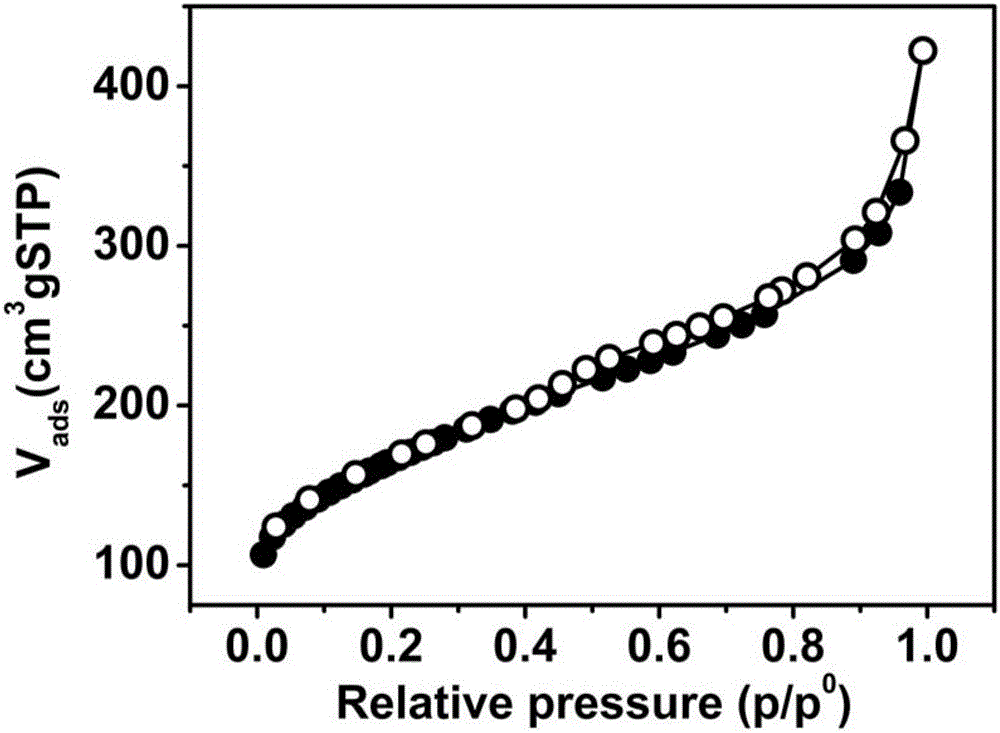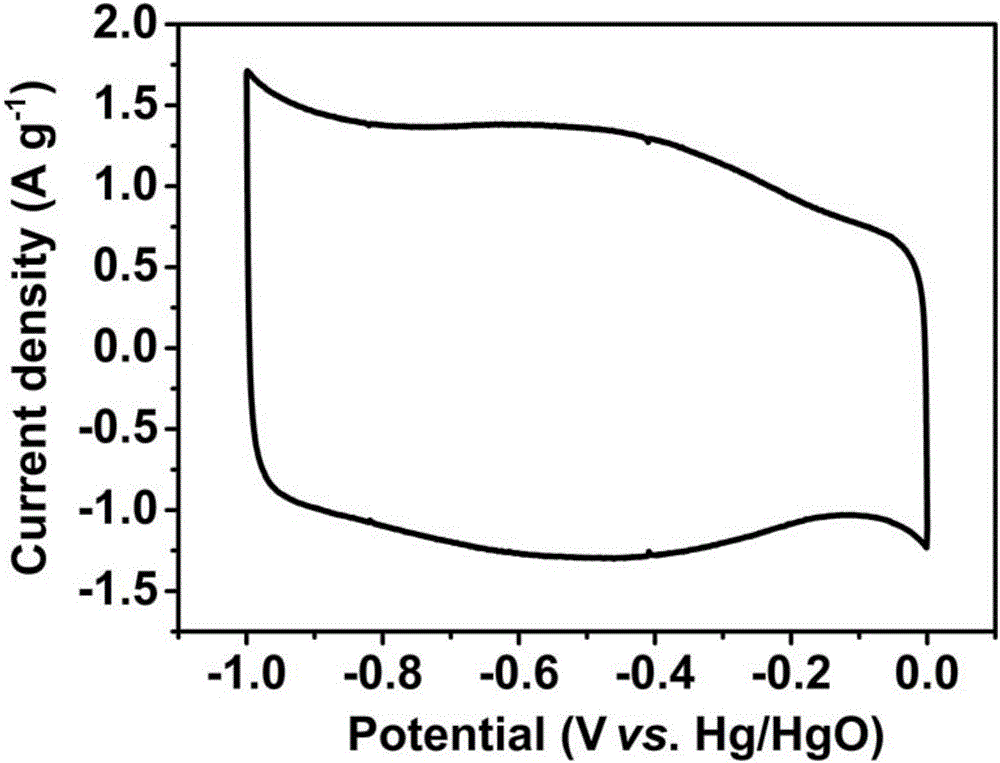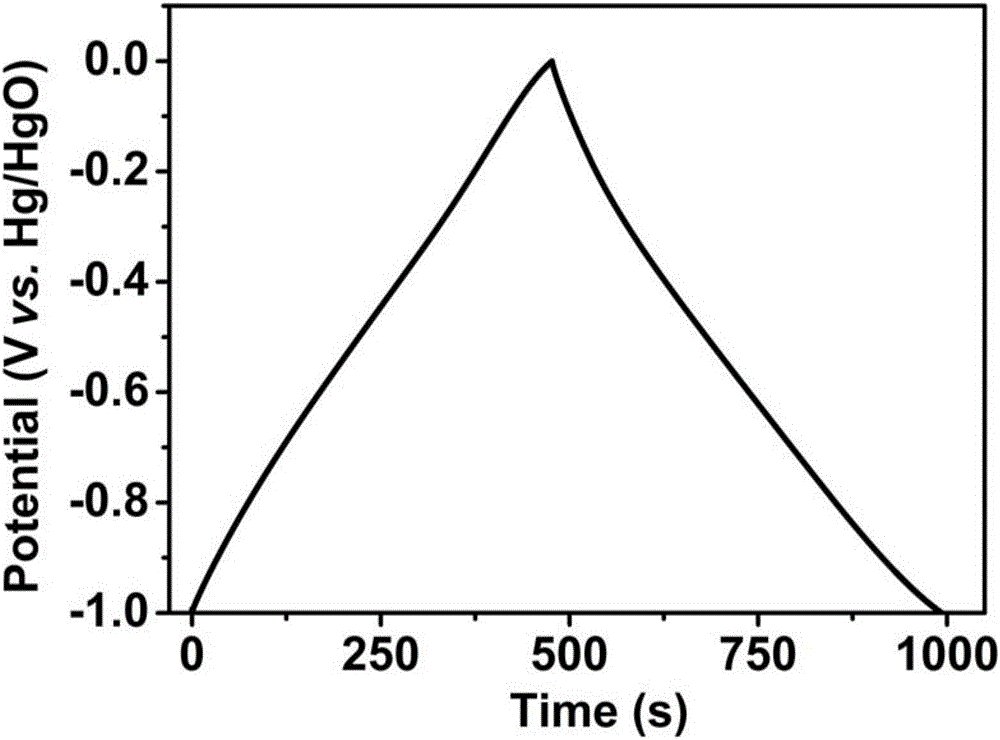B (or P) and N codoped perilla leaf porous carbon and preparation method thereof
A perilla leaf and porous carbon technology, applied in the field of plant resource utilization, can solve the problems of low specific capacitance, unsatisfactory comprehensive performance, and no reports related to perilla leaf porous carbon are found.
- Summary
- Abstract
- Description
- Claims
- Application Information
AI Technical Summary
Problems solved by technology
Method used
Image
Examples
Embodiment 1
[0075] Wash the perilla leaves with clean water to remove impurities, and grind them to 80 mesh with a grinder. Take 10g of perilla leaf powder, put it into 200mL of 1.5M boric acid solution, react in a high-pressure stainless steel kettle at 120°C for 2h, and then directly filter and dry. The activated and dried samples were placed in a high-temperature tube furnace under N 2 Under the protection of 5 ℃ min -1 Raise the temperature to 700°C, carbonize at a constant temperature for 2 hours, take out the carbide at room temperature, and wash it with ultrapure water until neutral. Finally, the product was dried to constant weight to obtain 0.81 g B, N co-doped perilla leaf porous carbon. BET specific surface area up to 462m 2 g -1 , with an average pore size of 4.25nm and an ideal pore size distribution.
Embodiment 2
[0077] Wash the perilla leaves with clean water to remove impurities, and grind them to 80 mesh with a grinder. Take 10g of perilla leaf powder, put it into 200mL of 1.5M boric acid solution, react in a high-pressure stainless steel kettle at 120°C for 2h, and then directly filter and dry. The activated and dried samples were placed in a high-temperature tube furnace under N 2 Under the protection of 5 ℃ min -1Raise the temperature to 750°C, carbonize at a constant temperature for 2 hours, take out the carbide at room temperature, and wash it with ultrapure water until neutral. Finally, the product was dried to constant weight to obtain 0.81 g B, N co-doped perilla leaf porous carbon. N (wt%) content is 1.5%, B (wt%) content is 3.3%, such as Figure 1 The BET specific surface area of the prepared biochar is as high as 573m 2 g -1 , the average pore size is 5.94nm, and has an ideal pore size distribution, and the size or size of the pore size is relatively uniform. Depe...
Embodiment 3
[0079] Wash the perilla leaves with clean water to remove impurities, and grind them to 80 mesh with a grinder. Take 10g of perilla leaf powder, put it into 200mL of 1.5M boric acid solution, react in a high-pressure stainless steel kettle at 120°C for 2h, and then directly filter and dry. The activated and dried samples were placed in a high-temperature tube furnace under N 2 Under the protection of 5 ℃ min -1 Raise the temperature to 800°C, carbonize at a constant temperature for 2 hours, take out the carbide at room temperature, and wash it with ultrapure water until neutral. Finally, the product was dried to constant weight to obtain 0.81 g B, N co-doped perilla leaf porous carbon. BET specific surface area up to 852m 2 g -1 , with an average pore size of 6.27nm and an ideal pore size distribution.
PUM
| Property | Measurement | Unit |
|---|---|---|
| pore size | aaaaa | aaaaa |
| pore size | aaaaa | aaaaa |
| pore size | aaaaa | aaaaa |
Abstract
Description
Claims
Application Information
 Login to View More
Login to View More - R&D
- Intellectual Property
- Life Sciences
- Materials
- Tech Scout
- Unparalleled Data Quality
- Higher Quality Content
- 60% Fewer Hallucinations
Browse by: Latest US Patents, China's latest patents, Technical Efficacy Thesaurus, Application Domain, Technology Topic, Popular Technical Reports.
© 2025 PatSnap. All rights reserved.Legal|Privacy policy|Modern Slavery Act Transparency Statement|Sitemap|About US| Contact US: help@patsnap.com



